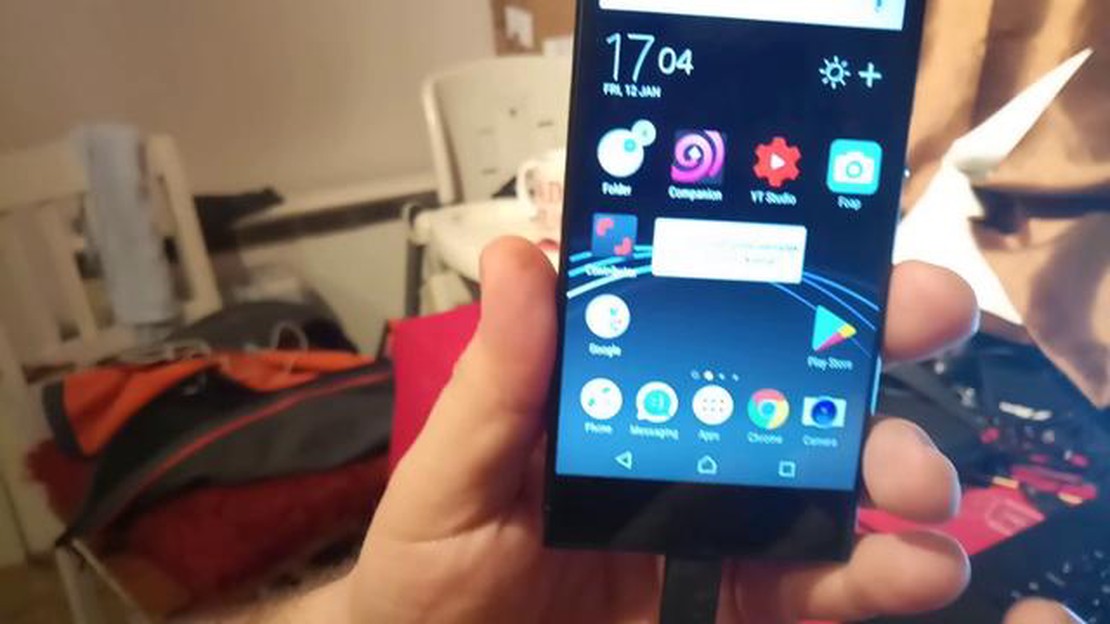Easy Ways to Master Reset or Factory Reset on Galaxy M30
How to hard reset on Galaxy M30 | easy ways to master reset or factory reset If you’re experiencing software issues or simply want to start fresh with …
Read Article
If you’re facing issues with your Samsung Galaxy S6 not being recognized by your PC or if you’re constantly receiving the error message “Unfortunately, Delivery has Stopped,” you’re not alone. These are common problems that many Galaxy S6 users encounter. Fortunately, there are steps that you can take to fix these issues and get your device working properly again.
One possible reason why your PC may not recognize your Samsung Galaxy S6 is because of a faulty USB cable or port. Try using a different USB cable or connecting the device to a different USB port to see if that resolves the issue. It’s also a good idea to check if the USB drivers are properly installed on your PC. You can do this by going to the official Samsung website and downloading the latest USB drivers for your device.
If you’re constantly receiving the error message “Unfortunately, Delivery has Stopped,” it could be due to a conflict with a specific app or a software glitch. One way to fix this is by clearing the cache and data for the Delivery app. Go to Settings, then Applications, and find the Delivery app. Tap on it and then select Clear Cache and Clear Data. This will remove any temporary files or corrupted data associated with the app.
In some cases, a factory reset may be necessary to resolve these issues. A factory reset will erase all data on your device, so it’s important to backup your important files beforehand. To perform a factory reset, go to Settings, then Backup & Reset, and select Factory Data Reset. Follow the on-screen prompts to complete the reset process.
By following these steps, you should be able to fix the issue of your Samsung Galaxy S6 not being recognized by your PC and resolve the “Unfortunately, Delivery has Stopped” error message. If the problem persists, it may be best to contact Samsung customer support for further assistance.
If your Samsung Galaxy S6 is not being recognized by your PC, there are a few steps you can take to troubleshoot and resolve the issue:
By following these steps, you should be able to fix the issue of your Samsung Galaxy S6 not being recognized by your PC.
Read Also: How to fix EA server connection error in Battlefield 2042
If your Samsung Galaxy S6 is not being recognized by your PC or you are encountering the “Unfortunately, Delivery has Stopped” error message, you can follow the steps below to troubleshoot and resolve the issue:
Hopefully, one of the steps above has resolved the issue you were experiencing with your Samsung Galaxy S6 not being recognized by your PC or the “Unfortunately, Delivery has Stopped” error message.
Read Also: Motorola Unveils Moto Razr in Blush Gold - Latest News on the Newest Color Variant
One of the common reasons why your Samsung Galaxy S6 may not be recognized by your PC is due to a faulty USB connection. In order to resolve this issue, you can follow the steps below to check the USB connection:
By following the steps above, you should be able to resolve the USB connection problem and have your Samsung Galaxy S6 recognized by your PC.
If your Samsung Galaxy S6 is not recognized by your PC, one possible solution is to update your USB drivers. Outdated or incompatible drivers can prevent your device from being recognized properly. Here’s how you can update your USB drivers:
After updating your USB drivers, your PC should be able to recognize your Samsung Galaxy S6 properly. If the problem still persists, you may need to try other troubleshooting steps.
If your Samsung Galaxy S6 is not recognized by your PC or if you are experiencing the “Unfortunately, Delivery has Stopped” error message, enabling USB debugging on your device might help resolve the issue. USB debugging allows your device to communicate with your computer over a USB connection and enables advanced debugging and development features.
Once USB debugging is enabled, your Samsung Galaxy S6 should be recognized by your PC, and you should be able to transfer files and perform other tasks that require a USB connection. If you are still facing any issues, try restarting your device and reconnecting it to your PC.
How to hard reset on Galaxy M30 | easy ways to master reset or factory reset If you’re experiencing software issues or simply want to start fresh with …
Read ArticleHow to Add Mobile Signature on your Galaxy S20 Gmail Account Are you tired of manually typing your signature at the end of every email you send from …
Read ArticleHow To Use Steam Points Like A Pro Steam Points have become a valuable currency for gamers around the world. These points can be earned by completing …
Read ArticleWhat To Do When Samsung KIES Cannot Detect Samsung Galaxy S4 As a Samsung Galaxy S4 user, you may have encountered a situation where Samsung KIES, the …
Read ArticleHow To Fix Xbox App 0x00000001 Error | NEW & Updated in 2023 If you are an avid gamer, you might have come across the Xbox App 0x00000001 Error. This …
Read ArticleHow to unblock sensitive content on twitter? Twitter is one of the most popular social media platforms where users can share their thoughts, photos …
Read Article